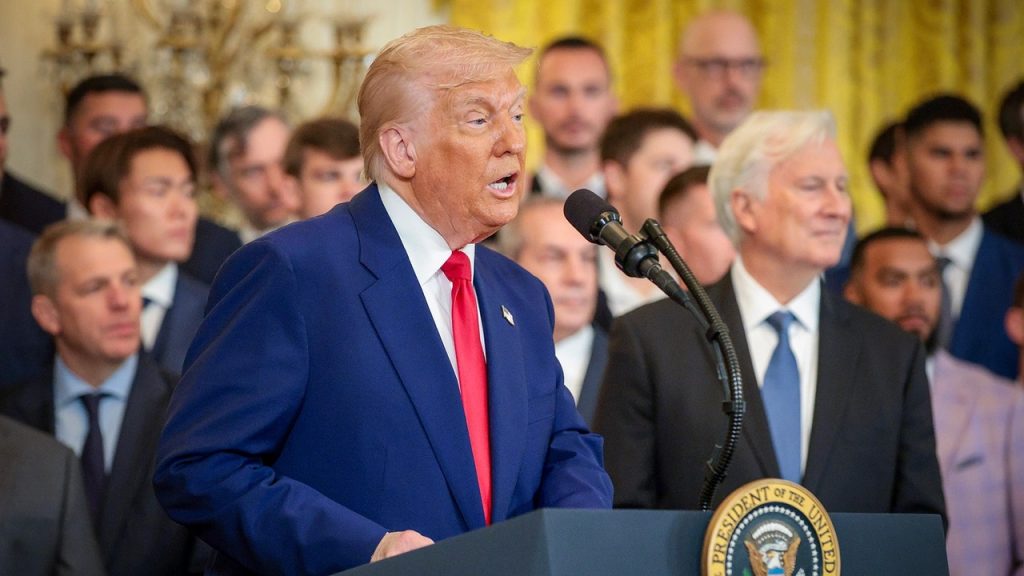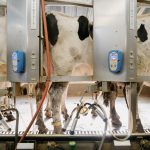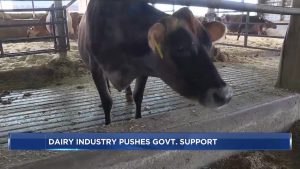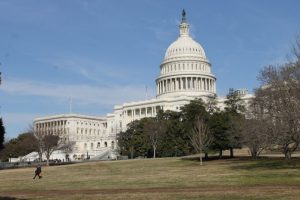
President Trump’s tariff policy shift brings a 90-day pause for most nations, but China isn’t on the list. As ag exports hang in the balance, farmers worry about escalating trade wars and higher equipment costs.
President Donald Trump’s higher tariffs became the law of the land this morning. By the afternoon, however, he changed course, announcing a 90-day pause on higher duties he imposed across the world.
In a surprise social media post, Trump said he made the decision after more than 75 countries reached out to U.S. officials looking to engage in negotiations. For now, the U.S. will levy a 10% tariff on all imported goods.
The one country not included in the tariff pause is China. In the same Truth Social post, Trump said he was increasing tariffs on Chinese imports to 125%. According to the president, this decision was based on the “lack of respect that China has shown to the world’s markets.”
Shortly after Trump’s statement, White House press secretary Karoline Leavitt said Trump made his decision because China “imprudently” decided to retaliate against the United States. “When you punch at the United States of America, President Trump is going to punch back harder.”
How did we get here?
On April 2, Trump imposed across-the-board 10% tariffs on goods from all countries. He also levied “reciprocal” tariffs on various countries for amounts he said equaled half the tariff rate each nation levied on U.S. goods.
At first, the president said those higher tariff rates were based on the “combined rates of a country’s tariffs, nonmonetary barriers, other forms of cheating.”
Later, U.S. Trade Representative officials clarified the new rates were actually calculated using trade deficit numbers. Essentially, the administration divided each country’s trade deficit amount by its total exports to the U.S. to determine a “tariff” percentage. The U.S. then imposed a “reciprocal” tariff for roughly half that amount.
Trump initially set China’s reciprocal tariff rate at 34%. In response, China announced April 8 it would impose 34% tariffs on U.S. imports. Trump responded with a 50% hike in reciprocal tariffs. This, coupled with previous tariffs on Chinese goods, put the new China tariff rate at 104%.
Chinese officials countered today by upping their tariff rate on U.S. goods to 84%. In response, Trump pushed the U.S. tariff rates up to 125%
What does this all mean for farmers?
Complicated math aside, what many farmers most want to know is how tariffs will impact their day-to-day lives. Some companies have already announced plans to pause farm machinery shipments from North American plants and imports from Europe. As more companies follow suit, this could further drive up costs that were already expected to rise as companies pass higher tariff costs on to consumers.
American Farm Bureau Federation officials note that while some products like potash and peat are exempt from higher tariffs, farmers could still expect to pay more for everything from seeds to equipment. Retaliatory tariffs would increase the cost of U.S. ag products, almost certainly lowering demand. About 20% of all ag products produced in the U.S. are exported.
A February AFBF report found that over 6,000 jobs are created for every $1 billion in agriculture exports. That created nearly 1.25 million jobs in 2022.
According to a Tax Foundation analysis, Trump’s tariffs could potentially raise $1.2 trillion in revenue over the next decade. Still, the foundation estimates the U.S. household would pay more than $1,500 in additional taxes this year. That amount would equal the largest tax increase for Americans in more than four decades.
Despite the dire projections, administration officials remained convinced until today that short-term uncertainly would ultimately yield economic gains. During an April 8 TV interview, Agriculture Secretary Brooke Rollins said the tariffs are designed to completely realign the economy around “putting America first.”
She argued that countries around the world are treating American ag products unfairly. According to her, tariffs are part of an “all of the above” strategy to yield better trade opportunities for ag producers.
“It isn’t a tariff question; it’s just an unfair trade practice and using unfair barriers to trade,” she said.
Ag groups certainly hope the strategy pays off. Gregg Doud, National Milk Producers Federation president, sees benefits to Trump’s policy. According to him, tariffs can be an effective tool to level the playing field and lower the U.S. ag trade deficit.
In a TV interview April 8, Doud conceded that tariffs would be particularly challenging for soybean producers given the significant amount of product shipped to China. Still, he remained optimistic about the future of trade and the U.S. dairy industry.
Caleb Ragland, American Soybean Association president, said he hopes the Trump administration will swiftly work with other countries to create new opportunities for U.S. soy and other products.
His remarks came in an April 3 release, where ASA laid out a three-point plan to ward off a long-term trade war. It called for updating the U.S.-Mexico-Canada Agreement, negotiating more purchase commitments from China and using tariffs to “level the playing field and create new market access.”
What happens next is anyone’s guess. For now, the only certainty is more uncertainty as the world heads toward yet another Trump tariff deadline.
You can now read the most important #news on #eDairyNews #Whatsapp channels!!!
🇺🇸 eDairy News INGLÊS: https://whatsapp.com/channel/0029VaKsjzGDTkJyIN6hcP1K























